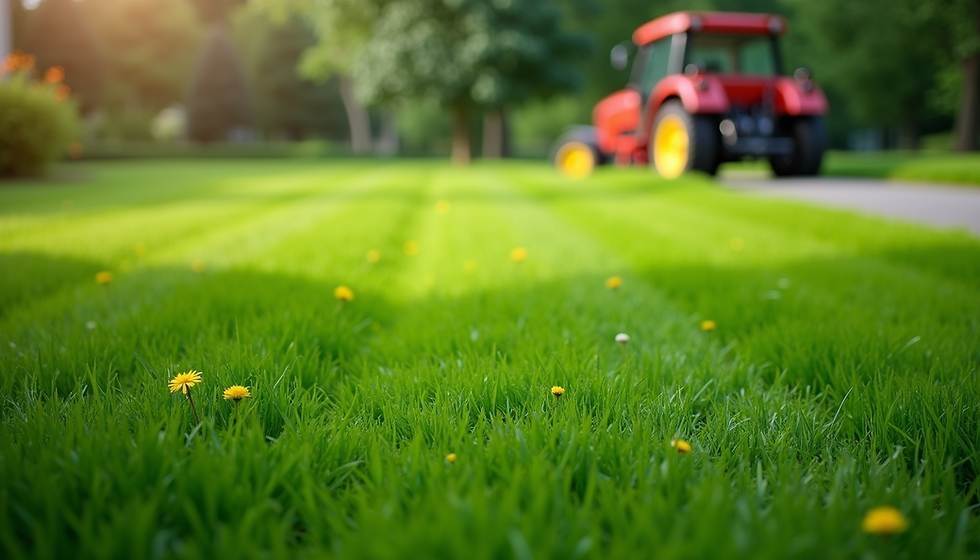Repairing Bare Spots
- _
- Feb 28, 2018
- 2 min read
Bare spots in your lawn happen for various reasons. Heavy foot traffic, pet damage, mower damage, insect, grub and/or disease damage, gas spills, fertilize spill, and rocks under the soil. If any of these do not happen to you, then consider yourself one of the lucky few. Unfortunately, many of us will get bare spots in our lawn. The problem some face is how to repair these bare spots properly.
Addressing The Issue
First we need to address what caused the bare spots. Pet damage and heavy foot traffic, will continually cause bare spots and heavy compaction of the soil if not addressed. These two will be the biggest cause of bare spots and the hardest to eliminate. Insect , grubs and disease damage can be wiped out with the use of a good insecticide or fungicide. These will usually happen during the Summer months. Rocks under the soil will always cause that dead brown spot in your turf. When I say rocks I am referring to large "creek rock" slabs. These hold heat which in turn increases soil temperature. Unless removed that dead spot in your turf will be reoccurring.
Repairing Bare Spots
Two methods are available for repairing bare spots. Which method is used depends on the size of the areas in question. First is over seeding and top dressing bare spots. A hard garden style rake or a Garden Weasel will be the only tools needed.


The materials needed will be a good, tall turf fescue and a bag of either compost, hardwood mulch or potting soil.


To prepare the damaged areas, use the hard rake or Garden Weasel to remove any debris and to rough up and loosen the soil. Next add the seed. Do not completely cover the area with seed (refer to the pic above). Putting down too much will result in a weak root system and poor growth. Next, apply a very light coating of top dressing about a 1/4 inch thick. Top dressing prevents the seed from drying out and holds heat in which speeds up germination. The second method is using sod. This will obviously be the method used for larger areas. Tools needed are a hard rake or Garden Weasel, and a spade. The spade will be used for two tasks, removing a layer of soil deep enough for the sod to lay even with the turf and to cut off any excess pieces of sod. Remove any soil necessary so the sod lays even with the existing turf. Take the rake or garden weasel and rough up the area working the soil at least a 1/2 inch deep to help with root development. Sod will require more water than the seeded areas and if you use sod do not fertilize for at least a month.




The customer support was instrumental in helping me choose the right gold detector machine based on the mineralization of my local soil. Their expertise ensured I selected a device with superior ground-balancing capabilities.
Clash of Clans Mod APK isn’t just a “hack” – it’s a creative playground where strategy, experimentation and pure fun collide. From skimming off the grind to building the wildest war machines, this mod unlocks the full potential of CoC.
Clash of Clans Mod APK isn’t just a “hack” – it’s a creative playground where strategy, experimentation and pure fun collide. From skimming off the grind to building the wildest war machines, this mod unlocks the full potential of CoC.
Download FMWhatsApp from FM WhatsApp for advanced privacy options, chat customization, and features not available in the official WhatsApp.